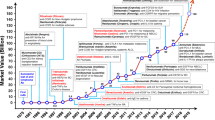Abstract
Monoclonal antibody (McAb) has been established as one of the most successful therapeutic strategies for the treatment of cancer. M1A2 (McAb) as a new monoclonal antibody was designed to recognize heat shock protein (HSP60), but its optimum production condition has not been studied. In this study, the cell culture conditions for both Roswell Park Memorial Institute Medium (RPMI 1640) and Dulbecco’s Modified Eagle Medium (DMEM) were optimized using artificial neural network (ANN) analysis to obtain maximum production of IgM McAb by hybridoma M1A2 cells. By using a central composite design, an experimental matrix with cultivation parameters of incubation time, temperature and fetal bovine serum (FBS) concentration on IgM McAb production was designed. The results was analysed by ANN network with different learning algorithms. From the analysis, batch back propagation (BBP) trained ANN composed of eight hidden nodes using a hyperbolic tangent sigmoid transfer function was capable to provide the highest McAb production for both RPMI and DMEM media. Under optimum conditions of 12.5% of FBS, at 33 °C after 3(1/2) days of incubation, maximum McAb production (1132.69 μg/ml) in DMEM was achieved. With PRMI 1640 medium, maximum McAb production (1105.12 μg/ml) was achieved at optimum conditions of 11% of FBS, at 33 °C after 4 days of incubation. The results of this study will provide information for optimum culture conditions of M1A2 McAb production in both DMEM and RPMI 1640 media and also give some clues for the other hybridoma excreting antibodies in the development of in vitro cell culture.







Similar content being viewed by others
References
Abbasiliasi S, Tan JS, Kadkhodaei S, Nelofer R, Ibrahim TAT, Mustafa S, Ariff AB (2016) Enhancement of BLIS production by Pediococcus acidilactici kp10 in optimized fermentation conditions using an artificial neural network. RSC Adv 6:6342–6349
Bakar AFA, Alitheen NB, Keong YS, Hamid M, Ali SAM, Ali AM (2009) A mouse igM monoclonal antibody recognizes breast and colon cancer. Hybridoma 28:199–203
Bashokouh F (2012) Characterization of M1A2 monoclonal antibody and in vitro cytotoxicity assessment. Universiti Putra Malaysia, Serdang
Chong SL, Mou DG, Ali AM, Lim SH, Tey BT (2008) Cell growth, cell-cycle progress, and antibody production in hybridoma cells cultivated under mild hypothermic conditions. Hybridoma 27:107–111
Gregory CD, Pound JD (2010) Microenvironmental influences of apoptosis in vivo and in vitro. Apoptosis 15:1029–1049
Harris M (2004) Monoclonal antibodies as therapeutic agents for cancer. Lancet Oncol 5:292–302
Heilmann K, Groth T, Behrsing O, Albrecht W, Schossig M, Lendlein A, Micheel B (2005) The influence of the chemical composition of cell culture material on the growth and antibody production of hybridoma cells. J Biotechnol 115:291–301
Ishida T, Ichihara M, Wang X, Yamamoto K, Kimura J, Majima E, Kiwada H (2006) Injection of PEGylated liposomes in rats elicits PEG specific IgM, which is responsible for rapid elimination of a second dose of PEGylated liposomes. J Control Release 112(1):15–25
Kontoravdi C, Asprey SP, Pistikopoulos EN, Mantalaris A (2007) Development of a dynamic model of monoclonal antibody production and glycosylation for product quality monitoring. Comput Chem Eng 31:392–400
Maizirwan M, Mat Saad M, Yumi Zuhanis HH, Mohamed Salleh MR (2008) Monoclonal antibody production: media optimization for enhancement the cell viability of hybridoma cell. Asian J Sci Res 1:525–531
Nor NM, Mohamed MS, Loh TC, Foo HL, Rahim RA, Tan JS, Mohamad R (2017) Comparative analyses on medium optimization using one-factor-at-a-time, response surface methodology, and artificial neural network for lysine–methionine biosynthesis by Pediococcus pentosaceus RF-1. Biotechnol Biotechnol Equip 31:935–947
Prabhu AA, Chityala S, Garg Y, Venkata Dasu V (2017a) Reverse micellar extraction of papain with cationic detergent based system: an optimization approach. Prep Biochem Biotechnol 47:236–244
Prabhu AA, Mandal B, Dasu VV (2017b) Medium optimization for high yield production of extracellular human interferon-γ from Pichia pastoris: a statistical optimization and neural network-based approach. Korean J Chem Eng 34:1109–1121
Sakagami H, Kishino K, Amano O, Kanda Y, Kunii S, Yokote Y, Oizumi H, Oizumi T (2009) Cell death induced by nutritional starvation in mouse macrophage-like RAW264.7 cells. Anticancer Res 29:343–347
Tan J, Ramanan R, Ling T, Shuhaimi M, Ariff A (2010) Comparison of predictive capabilities of response surface methodology and artificial neural network for optimization of periplasmic interferon-alpha 2b production by recombinant Escherichia coli. Minerva Biotecnologica 22:63–73
Terada S, Sasaki M, Yanagihara K, Yamada H (2005) Preparation of silk protein sericin as mitogenic factor for better mammalian cell culture. J Biosci Bioeng 100:667–671
Trebak M, Chong JM, Herlyn D, Speicher DW (1999) Efficient laboratory-scale production of monoclonal antibodies using membrane-based high-density cell culture technology. J Immunol Methods 230:59–70
Unni S, Prabhu AA, Pandey R, Hande R, Veeranki VD (2018) Artificial neural network-genetic algorithm (ANN-GA) based medium optimization for the production of human interferon gamma (hIFN-γ) in Kluyveromyces lactis cell factory. Can J Chem Eng 4:843–858
Wu X, Lin M, Li Y, Zhao X, Yan F (2009) Effects of DMEM and RPMI 1640 on the biological behavior of dog periosteum-derived cells. Cytotechnology 59:103–111
Acknowledgements
This work was funded by the short-term Grant of Universiti Sains Malaysia (PO4865, 304/PTENKIND/6315138).
Author information
Authors and Affiliations
Corresponding author
Ethics declarations
Competing interests
The authors declare that they have no competing interests.
Additional information
Publisher's Note
Springer Nature remains neutral with regard to jurisdictional claims in published maps and institutional affiliations.
Rights and permissions
About this article
Cite this article
Bashokouh, F., Abbasiliasi, S. & Tan, J.S. Optimization of cultivation conditions for monoclonal IgM antibody production by M1A2 hybridoma using artificial neural network. Cytotechnology 71, 849–860 (2019). https://doi.org/10.1007/s10616-019-00330-5
Received:
Accepted:
Published:
Issue Date:
DOI: https://doi.org/10.1007/s10616-019-00330-5




